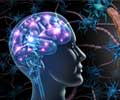Researches at the MassGeneral Institute for Neurodegererative Disorders (MIND) have identified a compound, C2-8, which appears to delay the loss of motor control and reduce neurological damage in animal models. This discovery could lead to a treatment that might be able to protect against the effects of Huntington’s Disease (HD). Their report is scheduled to appear in the Proceedings of the National Academy of Sciences but has received early online release.
“We found that C2-8 slows the progress of HD in a mouse model and might do the same thing in human patients, if it or its biochemical relatives can be translated into a drug,” says Steven Hersch, MD, PhD, of MIND and the Massachusetts General Hospital (MGH) Department of Neurology, who led the study. “What we don’t know yet is precisely how it works, what molecules it interacts with in cells and how potent it might be.”C2-8 was first identified as a candidate treatment for HD by MIND researcher Aleksey Kazantsev, PhD, based on its ability to block the aggregation of the mutant huntingtin protein in yeast and animal tissue and to improve function in a fruit fly model. The current study was designed to further investigate its potential as a therapeutic drug. The researchers first confirmed that oral doses of C2-8 can cross the blood-brain barrier and are nontoxic in a mouse model of HD. They also found that C2-8 does not interact with a number of molecules predictive of negative side effects.
HD mice that were treated with C2-8 starting at the age of 24 days scored significantly better on tests of strength, endurance and coordination than did HD mice that did not receive the molecule. While treatment significantly delayed progressive motor disability, the animals receiving C2-8 did not live longer. Examination of brain cells from the striatum, the area of the brain where the deterioration of HD occurs, showed that treated mice had less shrinkage of brain cells and smaller aggregates of huntingtin protein than did untreated HD mice.
“We’ve both validated that compounds reducing the aggregation of mutant huntingtin are potential HD drugs – so that strategy is one that other scientists should pursue – and shown that C2-8 has potential as the basis of a neuroprotective treatment,” says Hersch. “We now need to confirm those results in a different mouse model, see whether similar compounds may be more potent than C2-8 and search for the enzyme or receptor it is binding to.” Hersch is an associate professor of Neurology at Harvard Medical School.
Source-Eurekalert
GAN/C






